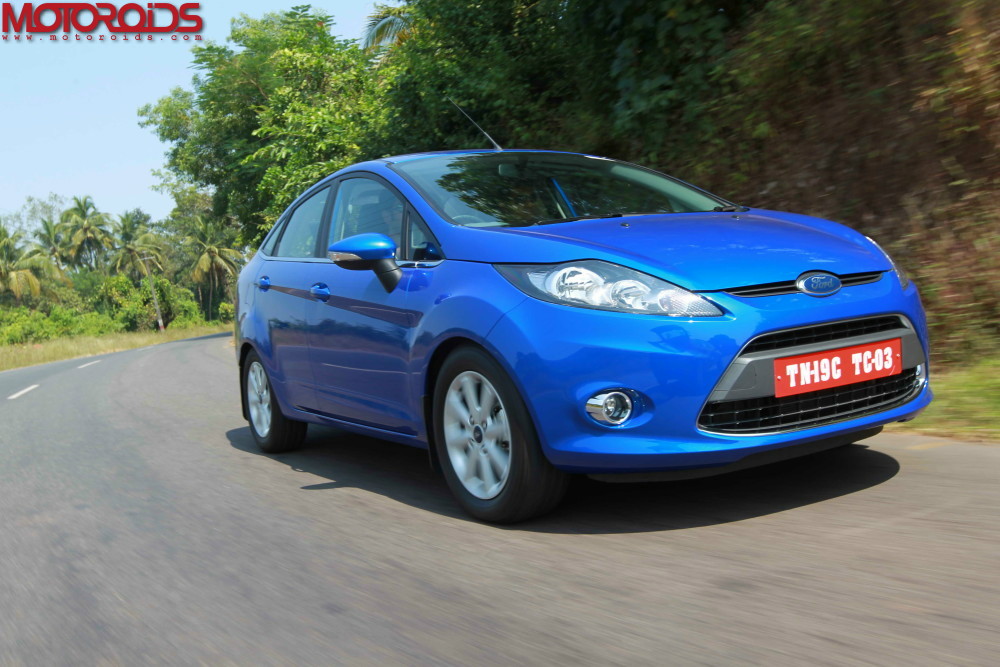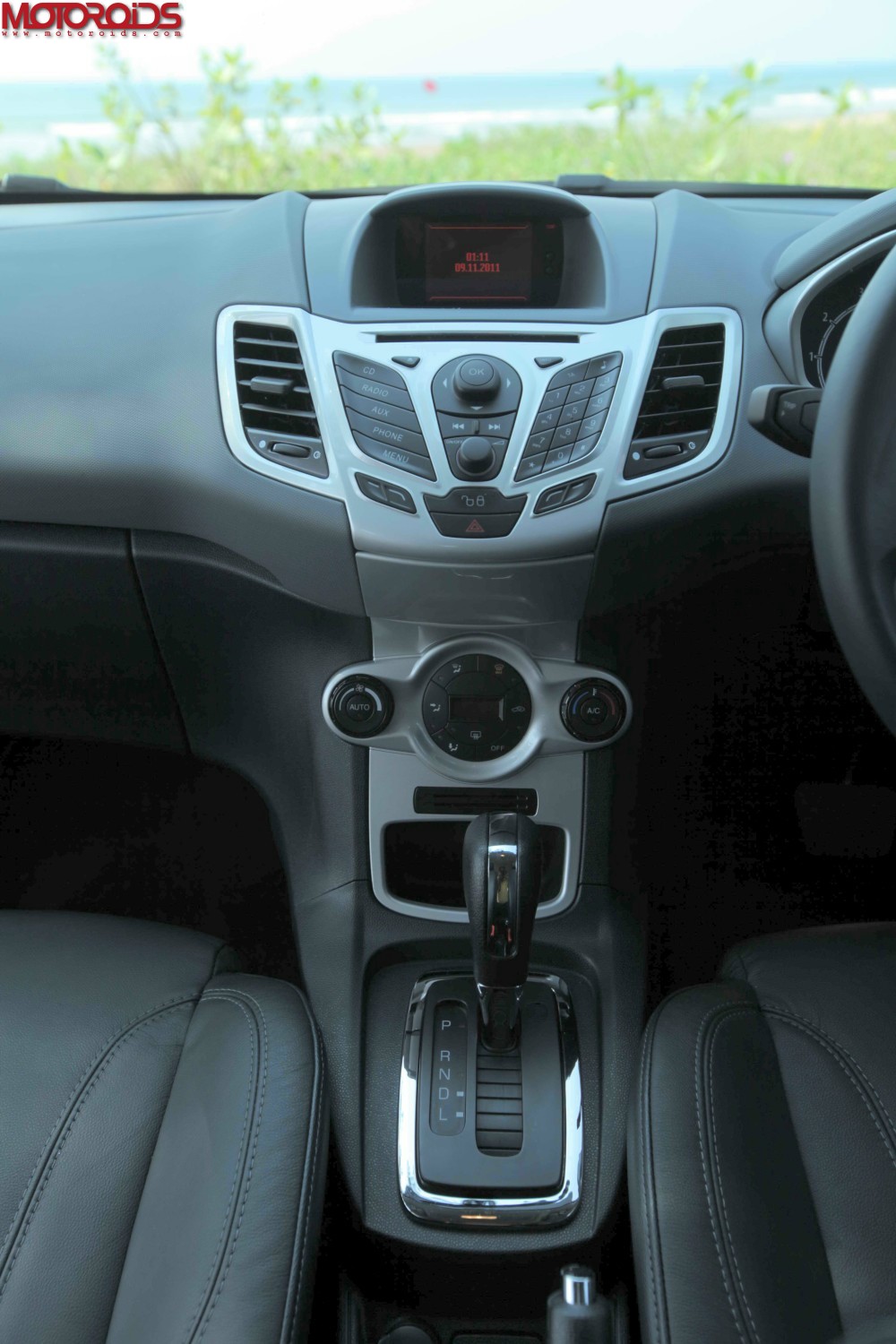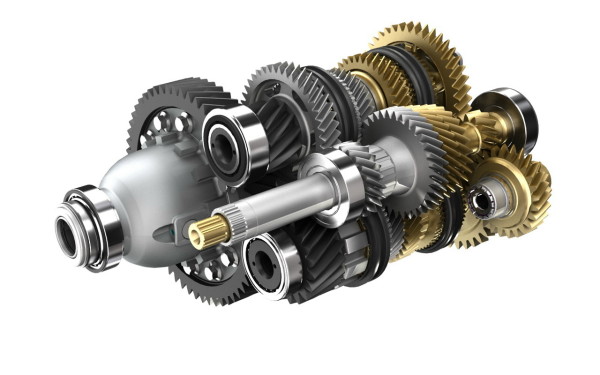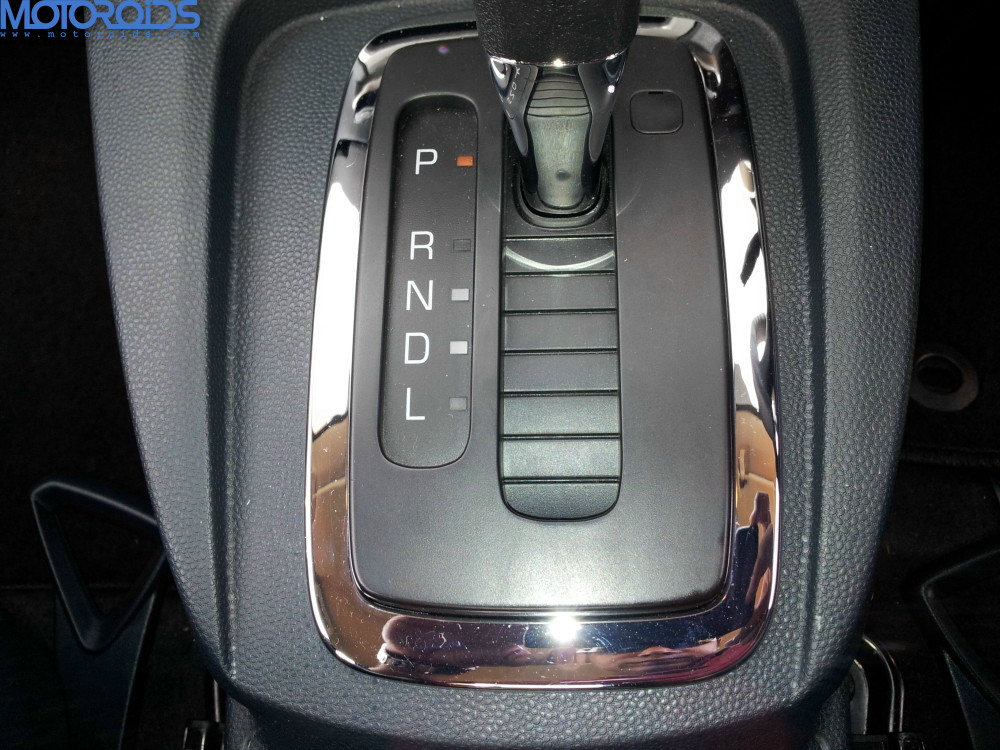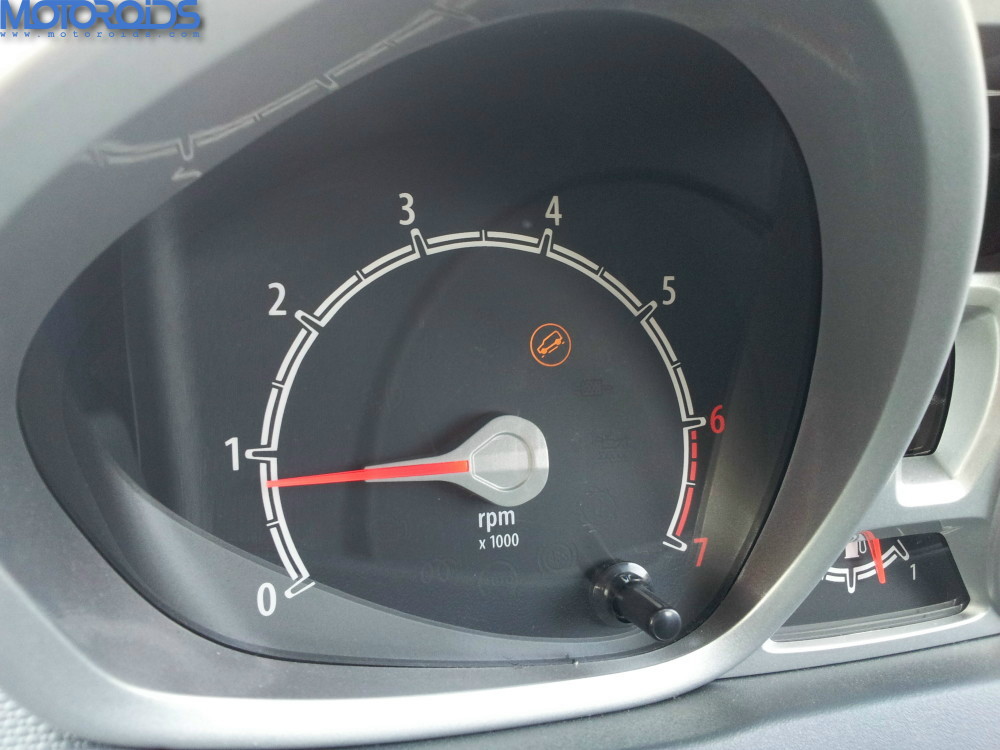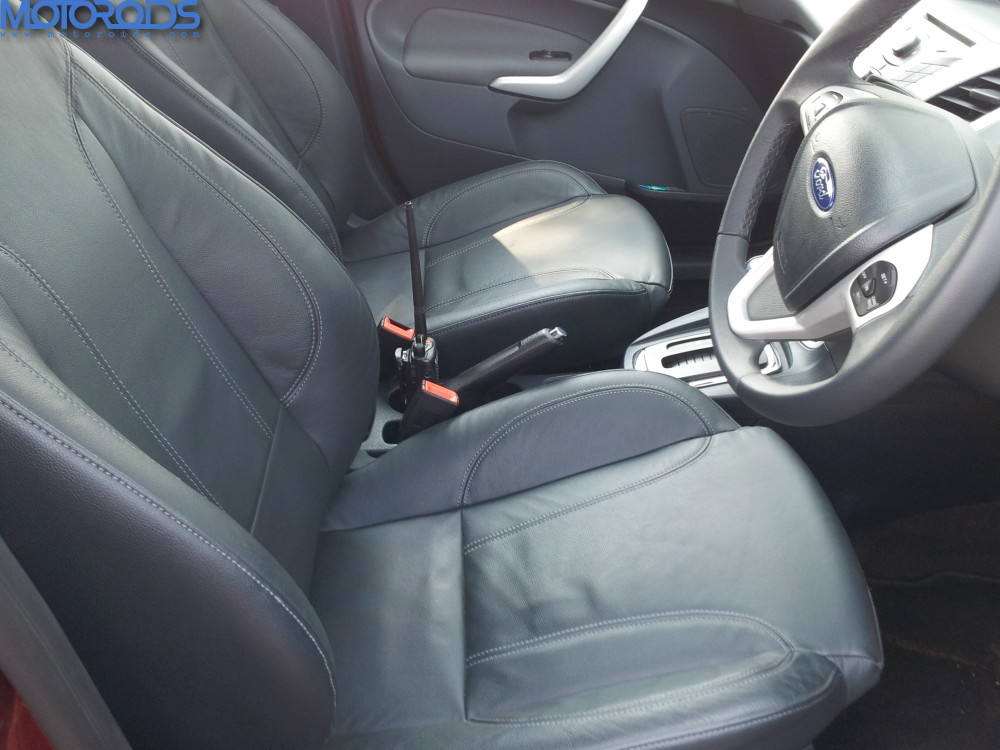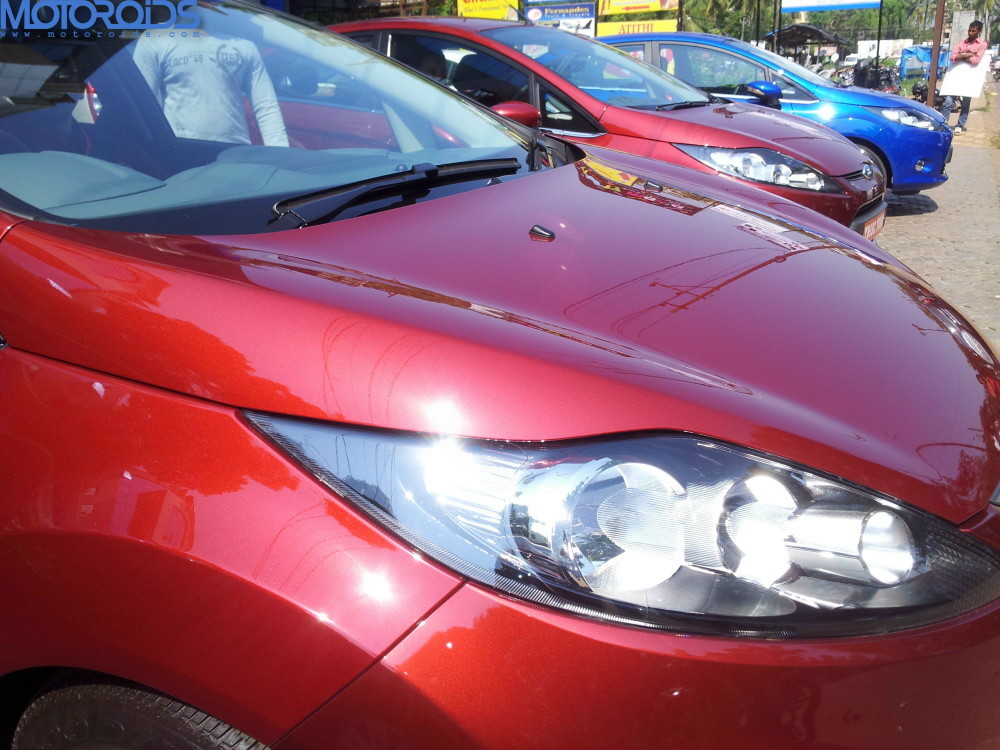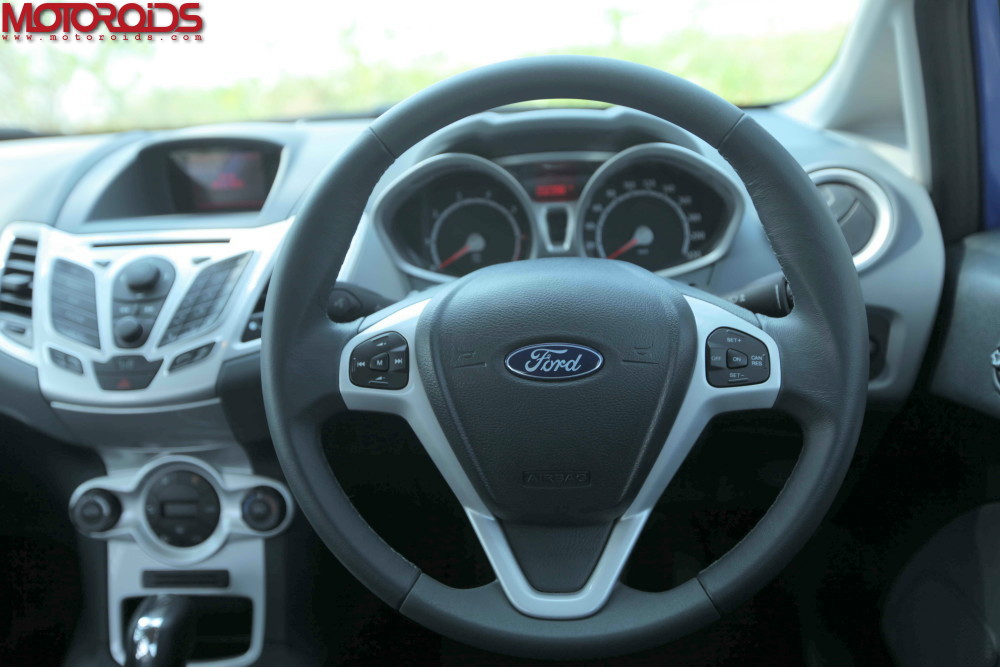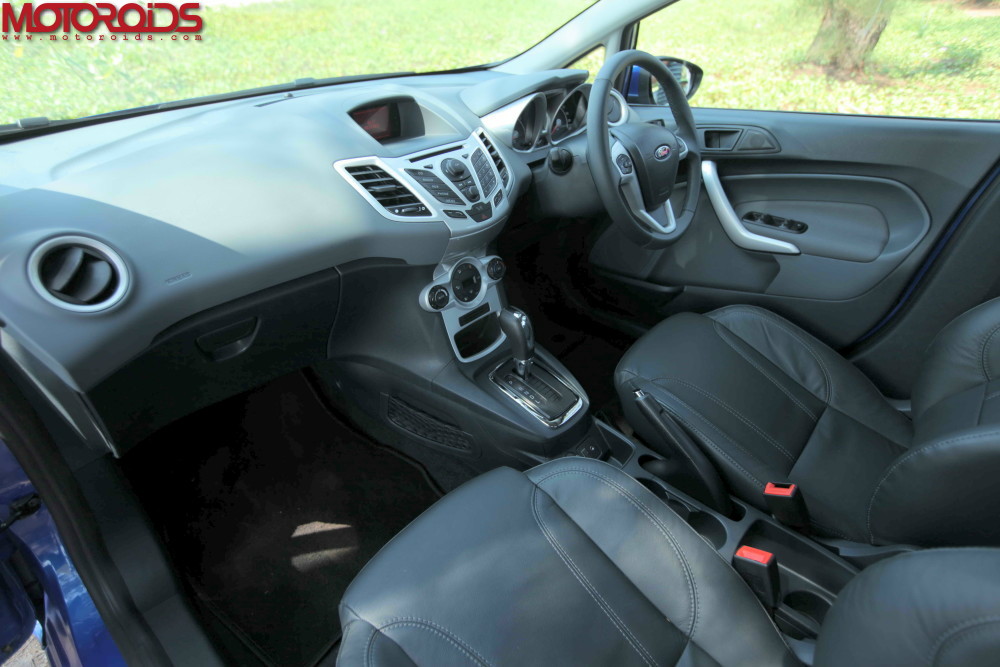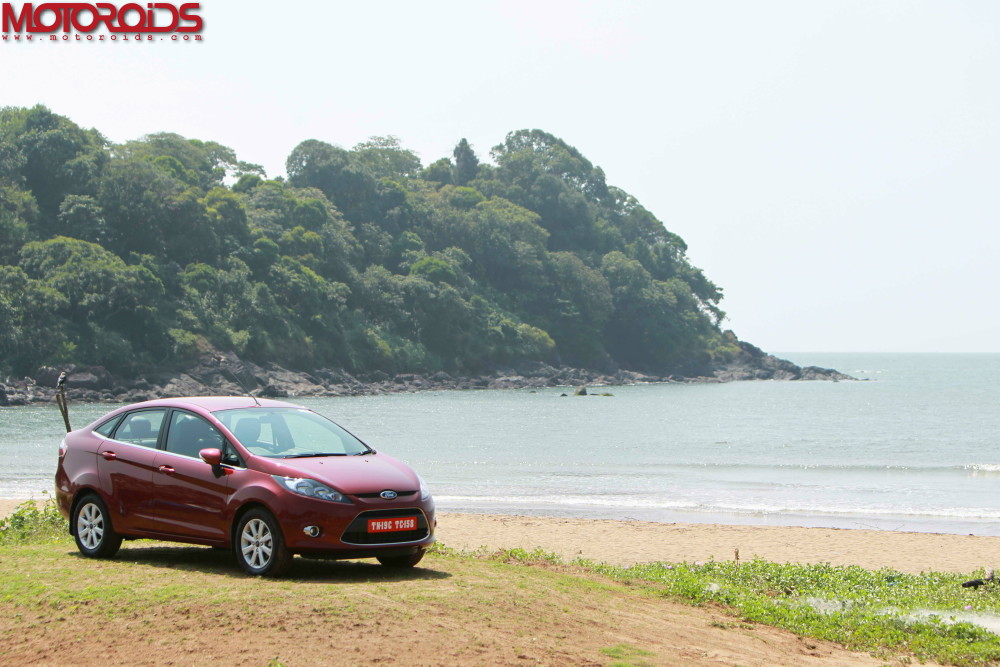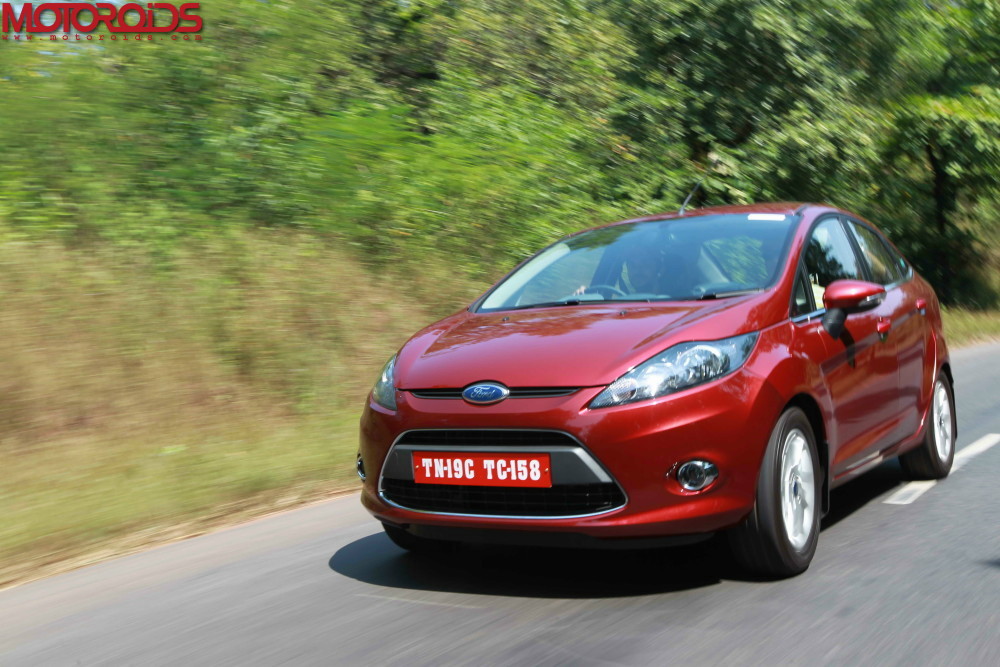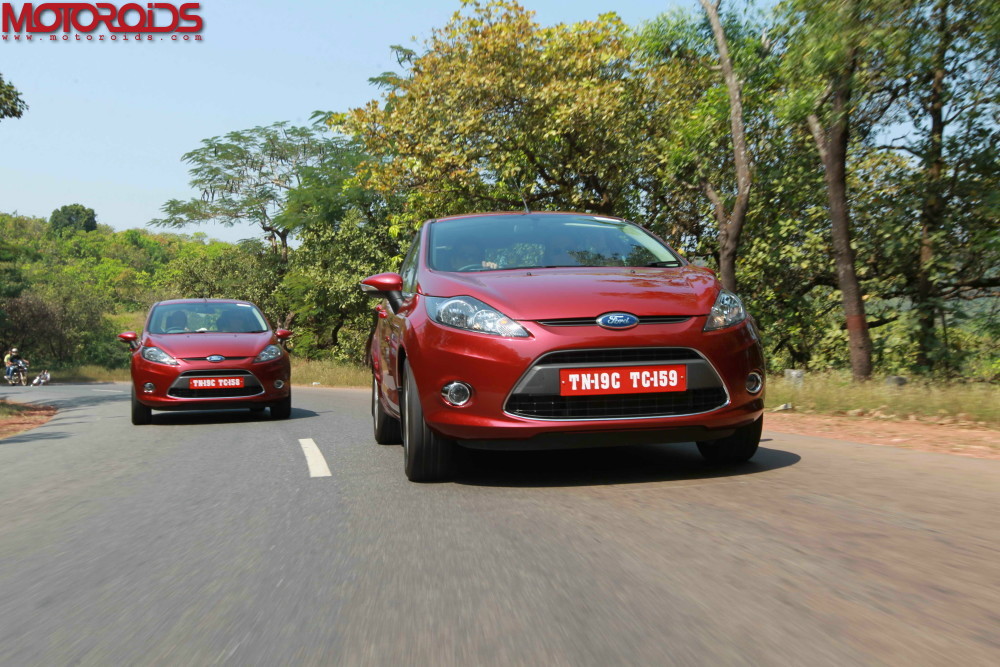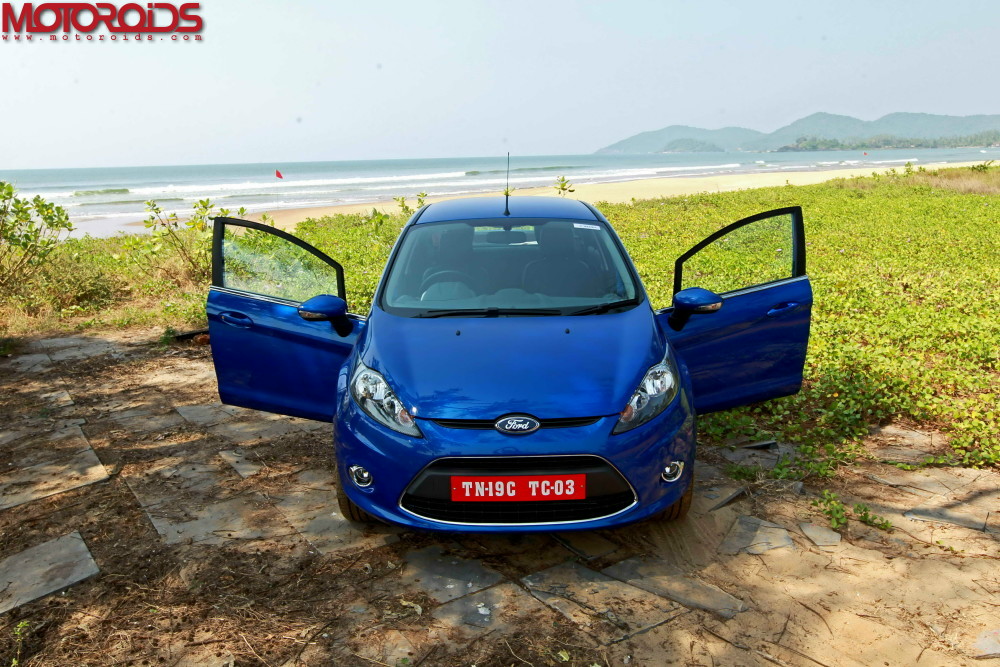Automatic transmissions have the reputation of sucking the fun out of a drive. Especially the 4-speed automatics that most of the mainstream cars sport are absolutely detestable for their lethargic shifts, noise and tendency to reduce fuel efficiency substantially. So when we first heard from the good blokes from Ford India calling us to Goa to sample the new Fiesta Ti-VCT automatic, we were a bit skeptical. After all, the Fiesta has always been, and still is the most fun to drive car in the Rs 10 lakh region and we were mighty scared at the very thought of the new Fiesta featuring a lazy 4-speed auto tranny.
However, as soon as we discovered that Ford India have gone the whole hog and brought their highly acclaimed dry-type dual clutch six-speed Powershift auto here, our morose faces had wide Colgate grins plastered across them. The PowerShift transmission is a jewel in Ford’s crown globally, making them the only carmaker besides VW capable of outfitting their mainstream cars with a dual-clutch transmission (not counting the cars in the premium segment). The new-age tranny is known for its capability to shift gears quickly without the typical lag associated with traditional automatics. It keeps the fun alive, while also not affecting the fuel efficiency.
So how does PowerShift work? And what’s so special about it?
To start off, the PowerShift transmission, unlike a traditional auto transmission is a dry clutch setup. It does away with the need of a torque converter, planetary gearsets, heavy pumps, hydraulic fluids, coolers and lines required in a traditional automatic. This significantly reduced the weight of the transmission, and also substantially reduces the amount of energy required asses shift requirements and the energy required to shift gears, leading to fuel efficiency gains, as much as 10% over a traditional auto transmission.
Secondly, the Dual clutch setup means that the shifts happen much more quickly – this is especially helpful in situations where you need to a gearshift quickly, such as while making an overtaking maneuver. The Ford Powershift transmission is a six-speed unit with twin internal clutches. One clutch supports the even gearset (2-4-6), while the other one supports the uneven set (1-3-5). Now, for example, when first gear is engaged, second gear cogs are engaged, so when need, all it takes is to disengaged, the 1-3-5 clutch to put the car in second cog. In the meantime, the 1-3-5 set shifts from first to third. The Ford Fiesta uses electric motor/solenoid actuation in place of heavy hydraulics for further energy gains.
Seems like a complicated tech. Will it be high on maintenance?
Nope. On the contrary, this is a no-maintenance required unit which comes completely sealed and lasts the lifetime of the vehicle. 2.4 lakh kilometers is the distance Ford India claims it to last for without you having to bother about anything at all. No oil changes, no part replacements, no top ups, no worries. It’s more reliable and pocket friendly once bought that your regular manual tranny.
How does it feel on the move?
We took the new Fiesta Ti-VCT out in Goa on a drive from Taj Ford Aguada for a 150km long drive. Having started off at the peak office hours at around 9:30am, and later having to traverse the single carriageway roads around Goa, we got ample opportunities to evaluate the real-world capabilities of the PowerShift transmission.
The six-speed auto works wonderfully well at low speeds. The shifts are really smooth, the mechatronics associated with the shifts are always sure about the rpm, wheels speeds and gears where they need to be in. With a teeny bit of slip allowed by the electronics, the shifts are extremely smooth and trundling along with the traffic at crawling speeds is a breeze. The shifts are most definitely more seamless, quieter and reassuring than a single clutch four-speed traditional auto. The PowerShift exhibits its superiority over traditional autos with aplomb at slow speeds.
While travelling at moderate speeds (50-60km/h), burying the right pedal into the floor to overtake the truck ahead, the response is a tad different. You could sense the transmission taking a slight moment while having to shift more than a couple of cogs. Think of it as a 6th to 2nd gear shift as you suddenly decide to make a dash and whiz past a slow moving vehicle from a gliding speed. The lag is not much, it’s just a fraction of a second, but still perceptible. Far, far quicker than your conventional auto, but still, clearly perceptible in the situation described above. The PowerShift, however, even with the minor lag, remains way superior to any other auto transmission in the C segment.
Just as was the case with slow speed, as long as you are making swift overtaking maneuvers at high speeds, you would not feel any trace of lag. Pressing the pedal at 100 km/h to get ahead of the hatchback ahead would shift down a cog quickly, smoothly and without any perceptible lag.
The brain of the PowerShift responds to various parameters such as throttle input, wheel speed, engine speed etc to decide which gear it should be in. And that algorithm is really well sorted out. So the shifts happen at different rev points based on how you are driving. For example, if you driving on a straight highway with the accelerator pedal at a constant position, as the engine revs build the gearshift will happen at around 3500 rpm. However, if you buried the pedal into the floor,
the rev needle will hold all the way up to 6000 rpm before the next higher gear is engaged. It’s all very clever, and makes life really easy without you even having to come to know of it.
In addition to the usual Drive or D mode, there is another L mode, which is meant to keep the car in the lowest gear ratio possible at any given speed. This mode frees the shift points from any consideration of throttle input and selects an engine speed for the car such that it can be in the lowest possible gear. What this mode does, as we observed, is never go below 3500 rpm, create a lot of engine noise, and burn the fuel in the tank at a really rapid pace. If you wish to accelerate at the wildest rate possible, just slot the drive selector into this mode. It may be useful for those one-off emergency situations where you misjudged the speed / distance of the oncoming traffic and need all you have to thrust past the vehicle you have half overtaken.
So how well does the PowerShift match up with DSG?
First of all, DSG, in India is not available for the smaller cars. It’s available for high-torque applications (read big diesels) such as for the Laura and the Jetta.
Further, comparing the wet-type DSG available in India with the dry-type PowerShift for the Fiesta won’t be comparing apples with apples. The dry type dual clutch transmission is a relatively new thing in the world of automatics and Ford should really be proud to have presented the technology here in India. Dry clutch systems are smaller, lighter, easier to service, more reliable and cheaper than a wet-clutch system. VW has also developed its next-gen dry type 7-speed DSG’s but they are not in India as yet.
Having said that, on our drive, we realized that the shift times for the PowerShift, although very quick, were not as quick as what we have experienced on the bigger Skodas and VW. Mr. John Rich, who happens to be the top tech guy with Ford worldwide when it comes to B-Platform vehicles, explained the phenomenon to us.
You see, modern diesel engines are inherently known to produces much higher torque than their petrol counterparts; the theory is truer with bigger diesels such as the 2.0-liter TDI on the Laura. Also, they produce their peak torque much lower down the rev range. What this means is, when you demand thrust and torque from a big diesel, it can afford not having to go down more than a couple of cogs to make the requisite amount of torque available. This saves it distance to travel lower down the order to engage a lower gear, and hence, in most cases quicker shifts. For petrol applications, a sudden demand of much higher torque requires a gear much lower (from 6th to 2nd for e.g.) to be engaged, which in turn takes a longer time, owing to the longer distance the engager unit needs to travel, hence slightly longer time in shifts.
All in all, it doesn’t make much sense comparing DSG with PowerShift as the two transmission systems in India reside in two totally different segments. The bottomline here is, PowerShift, without any trace of doubt is the best auto transmission out there in its segment and below as we write this.
Why have Ford not introduced an automatic on the 1.5 TDCi diesel?
This was the first question even we asked the tech guys at Ford. And the answer is; it’s not economically viable at the moment. While most of the European buyers still prefer a manual to auto in the segment, in other bigger markets like America, there hardly are any diesel sales. Ford just cannot ship enough 1.5 TDCis mated to this tranny even if they made one, and it would be a multi-million dollar project to mate the two. The volumes don’t allow it, and hence Ford hasn’t done it yet. So for all those of you who had already begun fancying a Fiesta diesel PowerShift auto, there is none in sight as of now.
Does the 1.5 Ti-VCT Fiesta PowerShift offer any additional features?
Yes, many! Apart from the convenience of an automatic transmission there are plenty other features that come along with the Fiesta Auto. Here’s a list
1. Hill Launch Assist – While climbing inclines it often is a matter of concern for most to prevent the car from rolling back down and banging into the car behind. The Fiesta Auto comes with Hill Launch Assist which prevents the car from rolling back. When on an incline, if you dab the brakes, the Fiesta auto will engage the ABS, and hold the car in place for as long as 3 seconds, enough time for you to dab the accelerator pedal and churn up enough power to move forward. Even if you take your foot up from the brake pedal, the car won’t move back for upto three seconds. This feature maintains enough brake pressure for up to three seconds or until the engine delivers enough torque to move up the hill. The Feature also works in reverse while backing up an incline.
2. Ford Grade Assist – There is this little button on the side of the drive selector stick. Pressing the button turns the Ford Grade Assist system on, and brings on an indicator light in the instrument cluster. The system greatly improves driving in hilly terrains. While climbing uphill, it intelligently selects a lower ratio to provide enough power and torque to prevent the car from puffing and pating. On the way down, it cleverly applies engine braking by shifting automatically into lower gears to allow better car control.
3. Micro Slip – As clear from the tem, Micro Slip allows a tiny amount of clutch slippage to allow smooth gearshifts and reduce powertrain NVH. This tiny slippage also allows engine to run at5 lower rpm levels in higher gears for better efficiency.
4. Creep-Forward Function – Even with your foot off the accelerator pedal, the car creeps forward allowing the vehicle speed to be controlled only with the brake pedal. This is especially useful while parking the car at low speeds, or while backing out of a driveway.
5. Neutral Coast Down – Allows the clutches to disengage under deceleration. With the clutches disengaged the transmission freewheels, aiding fuel efficiency.
6. Good fuel efficiency – Ford claims that the PowerShift delivera fuel efficiency which is comparable with that of a manual. ARAI figures are not available, but the officials at Ford expect that the figures will be marginally above or below those of the manual transmission
7. Good acceleration – Auto transmissions are known to kill the 0-100 km/h timings of a car. With the PowwerShift, however, Ford India is claiming a timing of 12.1 seconds. Now that’s not much off the 11.5s timing of the manual version
8. Leather upholstery – Ford have also included all-black leather upholstery for the car, which is unique only to the auto variant.
When are they launching it? What’s the price?
No disclosures have been made on the launch of the car. We expect an Expo debut though. Prices, too have not been announced yet.
Any negatives?
Not really. It’s a neat package, and is absolutely the best auto transmission in its segment. We would have loved to see it on a diesel rather than a petrol, but they cannot really put it in if they have not developed it.
Also, would have liked to have a Triptronic option to shift manually. Fappy paddle shifters behind the steering wheel would have been an absolute delight. After all, the Fiesta is a great car to drive, and we would have loved to shift manually while driving through the picturesque road leading to Karwar from Goa, but alas, we couldn’t. Ford guys say hardly anyone requires it. Somewhere deep down, we believe we do, every once in a while. However, if you are not as finger happy as we are, you be just fine without it. It’s pretty well sorted to work all by its own.
Should I be buying one?
Well if you are buying into the C-segment, are looking for a petrol car, you most definitely cannot find a better performing automatic option than this one. If you love driving, and you want an automatic petrol in this segment, nothing comes even close to this one.

